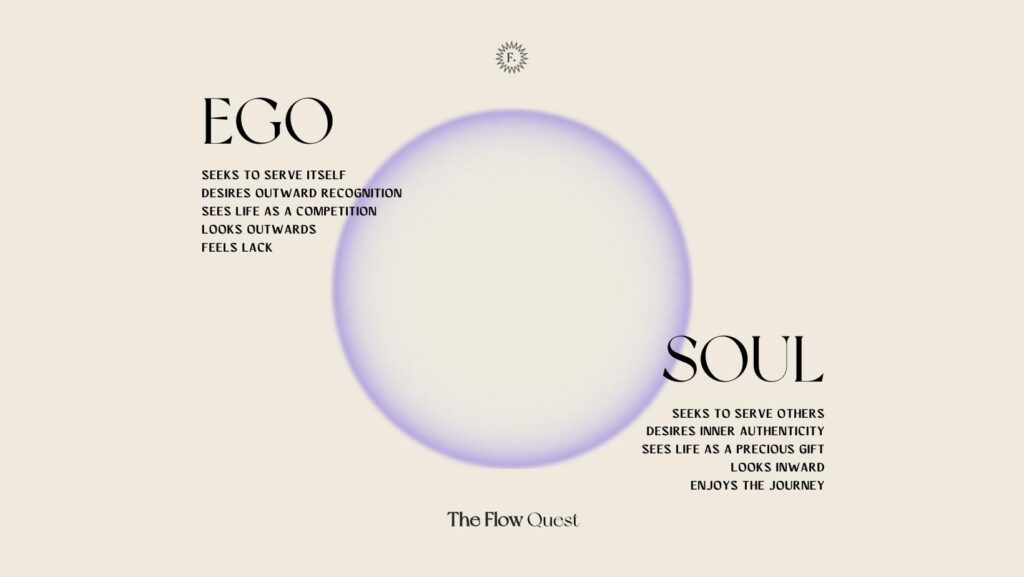Sometimes, meditating can feel like a heavy or daunting task especially when your mind or body is fighting you. It can be challenging to find the motivation to do that thing you know is good for you when you are feeling overwhelmed or disinterested. So, how do we show up for ourselves despite all of this? In this blog post, we will explore why it can be difficult to do something that we know is good for us, learn different forms of meditation, and strategies to help you make meditation a regular part of your life.
Getting Comfortable With The Uncomfortable
Showing up for yourself consistently can be an incredibly difficult feat often met with resistance. Before diving into the actual practice of meditation, it is important to identify the reasons for resistance. Often, fear is at the root of it. Fear of the unknown, fear of failure, fear of success, fear of looking inward and facing ourselves. Once you start building your meditation practice there are many different questions you may ask yourself. Questions along the lines of: Am I doing this right? How am I supposed to feel? Is this working? When will all my worries and fears go away? What if I can’t quiet my mind? Why is this bringing up emotions I don’t want to face? It is so easy to let these thoughts get the best of us and to fall into something comfortable and non-challenging instead of leaning into the uncomfortable.
It makes sense that meditation becomes unattractive when it starts to drudge up what we don’t want to think about. At the end of the day, most of us have one thing or another that we are not willing or wanting to confront in our lives. So instead, we aimlessly scroll social media, watch television, drink, smoke and get caught in a loop of avoidance. We get our hit of “cheap dopamine” and get a break from thinking about our feelings and emotions. But, what if we told you that facing uncertainty, your doubts and fears can lead you down the path to becoming the best version of yourself. When we have the courage to look closer at the fears and doubts, it can help us move through them and open the door to a more positive and rewarding meditative journey.

Different Ways To Meditate
What’s the first thing that comes to mind when you think about meditation? Whether you have meditated before or not, it’s likely, you think of sitting cross-legged, focusing on your breath while listening to a guided track of some kind or reciting a mantra. While you might think of this as traditional meditation, it isn’t the only way to practice. Anytime you are completely immersed in a singular activity in present moment while meeting that task with conscious breath, use of your senses, and heightened awareness you are meditating. We need to break the conventional way we traditionally look at mediation and look at alternate forms because there are so many. Then, maybe the practice won’t seem so daunting to implement into our lives and we won’t be so focused on getting it right. We need to appreciate that there no wrong way to meditate, and if the mind wanders, we must simply acknowledge the thought and with patience return the focus to the breath. When exploring different ways to meditate, the best thing to do is to choose the form you most enjoy. Experiment with different meditation techniques and find which works best for you. Finally, be consistent with your practice and be patient and kind with yourself.
What Makes A Meditative Practice:
- Anytime you are completely immersed in what you are doing in the present moment
- Meeting a challenge with the right amount of effort and work
Other ways to practice meditation:
- Movement meditation: Combining physical movements with mindfulness such as yoga, walking, running, gentle movement
- Focused Meditation: Focusing on something internal such as breathing or bringing in external objects into focus such as counting, cleaning and gardening
- Creative Meditation: Engaging in a creative activity like painting, drawing, sculpting or any creative expression to achieve a meditative state
- Spiritual meditation: Connecting to a higher power/god or worship is known to be meditative
Tips & Strategies You Can Implement
Following these tips and strategies will help you create a foundation for successful meditation:
- Starting small – 10 minutes per day is a great place to start. You can slowly increase the amount you meditate over time. We all have a limited amount of time during the day and it’s easy to get overwhelmed if we try to meditate for long periods of time. By breaking our meditation routine into smaller chunks, we can still reap all the benefits of meditation without feeling overwhelmed. Taking five or ten minutes to clear your mind can help reduce stress and increase flow, allowing us to move past our fears and reach our goals with greater success.
- Making meditation apart of your routine – Implement the practice into your life as a daily habit. This will help you stay in the flow of meditating regularly, which is the key to seeing long-term success in meditation. Developing a routine will also help you face any fears or resistance you may have around the practice, as well as push yourself to keep growing. Remember, it takes 60 days to build a habit. Practicing upon waking up in the morning and before bed is highly suggested.
- Stay motivated with guided meditations – Guided meditation is a great way to relax and reduce stress. It involves following a series of verbal instructions that guide you through your meditation and help you focus on your breathing and feelings. You can find them online for free or as an app – there are some really popular ones like Headspace, Calm, and Insight Timer that can help you get into the right mindset and provide some guidance. Why not give it a go and see how it works for you?
When we don’t feel like meditating, it’s often because our minds are full of thoughts and emotions that we don’t want to confront. However, if we can find a way to meditate even when we don’t want to, we can learn to face our thoughts and emotions in a healthy and constructive way. With patience and practice, we can learn to make meditation a regular part of our lives, and reap the many benefits it offers. The Flow Quest is all about making mindfulness accessible regardless of where you are on your journey. Meditation can be a valuable tool for managing stress and improving well-being. If you’re struggling to motivate yourself to meditate, try starting with a small commitment, finding a comfortable space, using a guided meditation, focusing on your breath, and being patient with yourself. With practice and persistence, you can develop a regular meditation practice that will benefit you for years to come.
Affirmations
- I will take a few moments every day to practice relaxation and meditation.
- I will be kind to myself and focus on the present moment.
- I will take deep breaths and focus on my breathing to let go of all thoughts.
- I will allow myself to relax and enjoy the quiet time I set aside for meditation.
- I trust that I will feel great after meditating, even if I don’t want to do it at first.
Sources & Suggested Resources
- Check out our resource page for our favourite meditations.

































